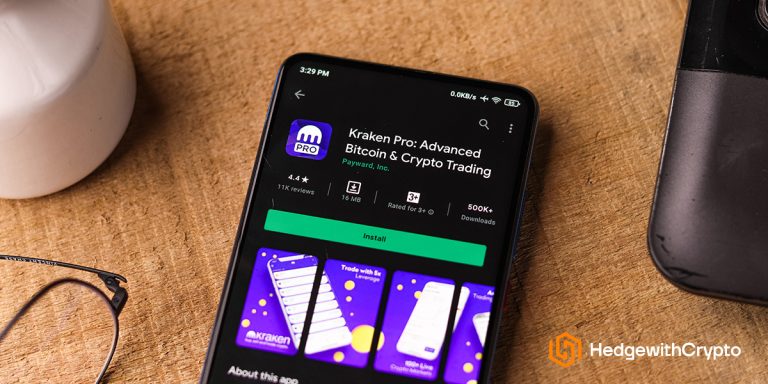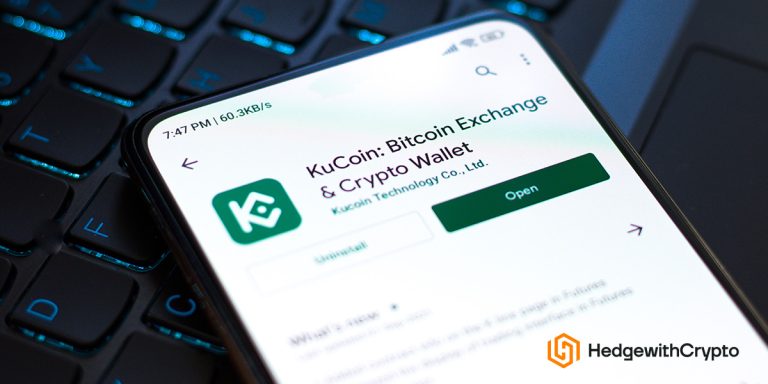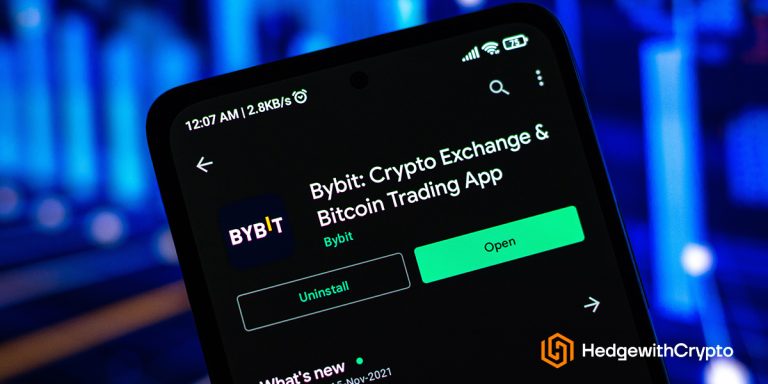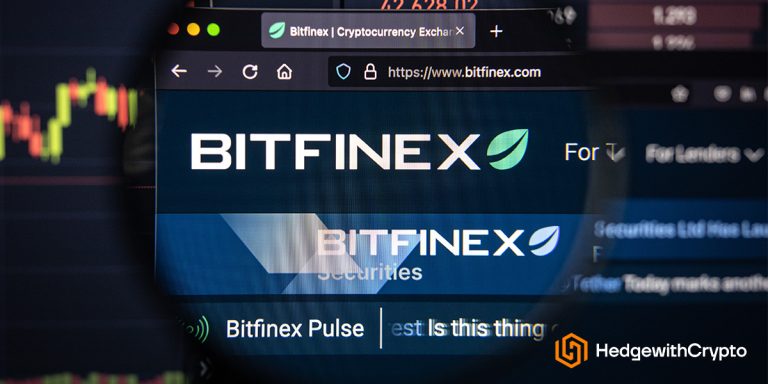What Is KYC In Crypto, What’s It Mean & Why It’s Important?
Key Takeaways:
- Know-Your-Customer (KYC) is a process that requires crypto exchange users to verify their identity before fiat deposits and trading can be undertaken.
- KYC plays an important role in identifying and preventing financial crimes that may occur through banks, institutions, and crypto exchanges, as it forms an element of the Anti-Money Laundering (AML) regulations.
- The procedures and requirements to complete KYC differ amongst crypto exchanges, with some trading platforms allowing users limited access to their features and markets for unverified accounts.
- The typical requirements to complete KYC include the electronic provision of a government-issued form of ID such as a passport or driver's license, a selfie photo, and basic personal details.
TABLE OF CONTENTS
What Does KYC Mean In Crypto?
Know Your Customer (KYC) is a globally recognized regulation that requires new accounts (physical or digital) with a financial institution such as crypto exchanges to provide some form of identity verification. Businesses offering a financial service must be completely certain who their customers are, primarily to avoid or uncover illegal behavior such as fraud and money laundering.
Trusted and reputable crypto exchanges will mandate KYC which is no different from a bank needing a driver’s license and utility statements before they can settle a loan. So in the crypto world, KYC verification serves the same purpose. To provide their customers with the ability to deposit and withdraw fiat currencies (such as USD, GBP or AUD), exchanges like Binance and Coinbase must verify the identity of their customers. Different nations and exchanges will have their own specific requirements.
Why Do We Need KYC In Crypto?
To fully grasp how KYC verification fits into the blockchain world, we must first understand AML. Anti-Money Laundering is an umbrella set of regulations for financial providers in various fields. This might include banks, investment cryptocurrency exchanges, or brokers which can have different operations and requirements. The primary purpose of these laws is to prevent or identify criminal activity of all kinds that may occur through the medium of cryptocurrency exchanges. Stopping money laundering in its tracks is an important weapon against lone criminals and organizations such as terrorists or drug syndicates.
The KYC regulations are just one element of the over-arching AML requirements. Exchanges may need to filter software, keep transaction records, and prove each customer's identity. Most governments globally have some form of AML regulation in place. Residents of countries without AML practices are often denied access to exchanges.
Can You Buy Crypto Without KYC?
The majority of crypto exchanges with a fiat on-ramp require customers to verify their accounts before they can begin buying cryptocurrencies. However, not all cryptocurrency exchanges on the market require customer verification. In particular, some Chinese-founded platforms do not require any information other than an email address and password before an account can start trading. Some of the best no KYC crypto exchanges that allow individuals to trade without ID verification are Bybit and KuCoin.
Using any of these exchanges can be quite convenient for some investors due to their minimal verification requirements. Once an account has been set up and its email address confirmed, there is no need to submit additional information (such as residential address and government identification). While no KYC is great for time-saving, it’s mostly sought by those wanting to protect their privacy. An investor might prioritize personal security for all sorts of reasons – tax purposes, restrictions imposed by local governments, or simply preferring to remain anonymous.
However, using an exchange without KYC can actually end up becoming more inconvenient than simply passing verification protocols. Generally speaking, exchanges that don’t comply with AML aren’t able to offer fiat deposits and withdrawals. This means traders must fund their accounts with cryptocurrency. If they’re a beginner, this would require using multiple exchanges and wallet addresses, which can quickly become confusing. We strongly recommend that beginners stick to regulated exchanges with solid KYC protocols to buy cryptocurrency.
How Do Crypto Exchanges Verify Identity?
Whenever a new account wants to make a deposit, withdrawal, or trade with fiat currency, most crypto exchanges will prompt individuals to provide basic information. This process may take the shape of a pop-up form, an entirely new webpage, or even a quiz customers must complete by scanning a QR code on a smartphone. The information can vary on the level of verification sought after but tends to include:
- Full legal name
- Date of birth
- Residential address
- Postcode
- Government-issued ID number (such as a Driver’s license number)
- Image of Government-issued ID
- Selfie
For example, the entry-level verification on Binance for a verified account requires personal information, a Government-issued form of identity, and facial recognition as shown below. The time to complete the verification on Binance for this level is up to 15 minutes on average.
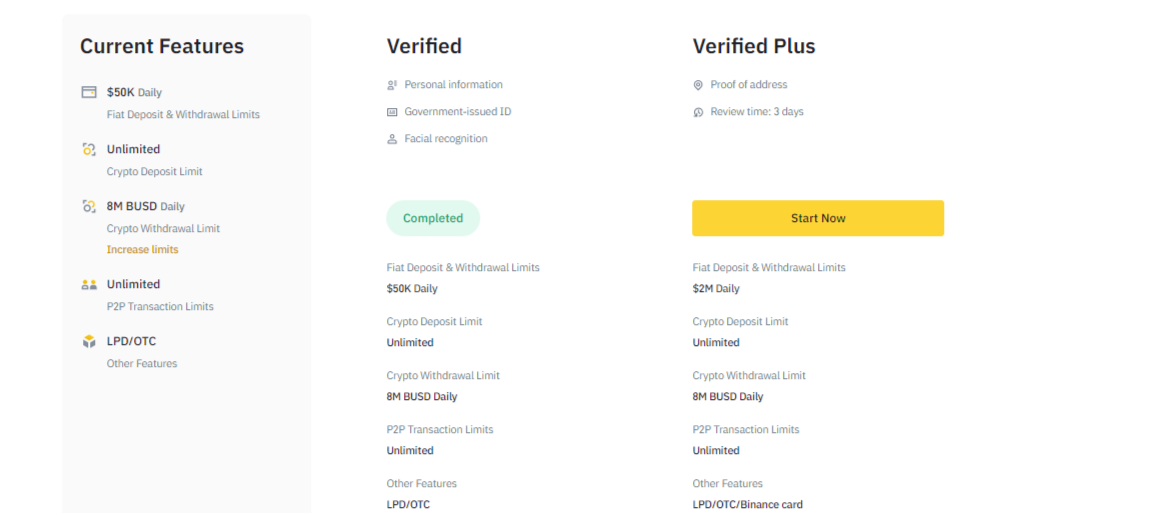
Once the appropriate information has been completed, the exchange will rely on its verification partner to ensure the customer’s identity is legitimate. The third-party verification partners will match data provided with those accessible on official databases. This process is typically done automatically using advanced code found in KYC software. Examples of these companies include Chainalysis, Blockpass and Civic.
Is The KYC Process Automatic?
Automating KYC has been a significant step forward for the crypto industry. In its earlier days, verifying new accounts would be done by hand, taking up to (and sometimes over) a week. This inefficiency was at odds with the crypto market’s motto of “24/7 trading, anytime, anywhere”. In a week of waiting to get verified, the market may have swung 20+%, leaving potential profits at the wayside for savvy investors.
There are other advantages to automating KYC protocols too. Using KYC software, exchanges can react to new government legislation and regulatory changes by adapting the code. In addition, automating KYC software gives companies access to data on patterns of historical criminal behavior and transactions. This allows for deeper analysis and the implementation of preventative measures.
What Are The Benefits of Completing KYC?
There are certainly some downsides to Anti-Money Laundering protocols. But as a whole, most consider them to be a “necessary evil” when it comes to the growth of the cryptocurrency sector.
Cryptocurrency is intended to be an unregulated currency – out of reach of centralized banks and governments. However, as the industry has progressed, it’s become more apparent that a complete lack of regulatory oversight will likely be impossible. At some point, a compromise will have to be reached before cryptocurrency can see widespread cryptocurrency adoption. Complying with basic AML and KYC regulations is a good starting point for the industry to see greater legitimacy within broader society.
- Less legal liability. Through continually meeting the AML and KYC requirements, exchanges and other crypto providers are less likely to come under fire from governments or encounter legal issues. For example, suppose a customer on an unregulated exchange gets away with a crime due to a lack of KYC protocols. In that case, the exchange owners might get into legal trouble. An automated and top-of-the-line KYC process can help exchanges focus on providing excellent service instead of meeting constantly-evolving regulatory requirements.
- An enhanced trust factor. Beginner or experienced customers are often a little wary of exchanges without the proper regulatory oversight. While some avid blockchain users actively seek out unregulated platforms, others prefer crypto exchanges registered with AUSTRAC or a similar body. It’s also worth noting that unregulated exchanges cannot typically offer fiat currency deposits, withdrawals, and trades, which might be a major inconvenience for crypto newcomers.
- Reduced criminal activity. The entire point of AML and KYC laws is to make criminal activity, particularly money laundering, more difficult to get away with. Criminals that have flocked to crypto are more likely to be caught, thanks to solid KYC systems. Minimizing criminal activity in crypto (reaching US $14 billion in 2021) will help broader societal and government sentiment.
The Challenges With KYC in Crypto
The blockchain community is far from unanimous in its support of KYC measures. Preventing criminal activity is undoubtedly important, but forcing a company to keep customer transaction records and identity documents within a centralized database flies in the face of decentralization.
Some are concerned with the privacy and centralization of AML requirements, and there have also been past instances of hackers obtaining KYC data from crypto exchanges. In March 2021, a hacker went after four prominent exchanges — Binance, Bitfinex, Poloneix and Bittrex. The hacker, known by the pseudonym ExploitDOT, claimed to have stolen hundreds of sensitive documents such as ID cards, driver’s licenses and passports. For a list of crypto exchange hacks in the past, read this article.
How To Complete KYC In Crypto?
The requirements for passing the Know Your Customer process will vary from exchange to exchange. Mostly, it will be similar regardless of the platform being used. You will likely need a smartphone and some form of a Government-issued ID to pass KYC on the majority of modern exchanges.
For this article, we’ll use verifying an account on Binance with screenshots of the process for the example. The exact method might differ slightly for your platform of choice, however, the steps involved will be similar.
Step 1. Begin the identity verification process
Some exchanges will allow customers to start the verification process anywhere on the platform. Others require you to access a specific webpage. Most exchanges will have the verification page visible in the main navigational menu. case. An example is shown below using Binance.
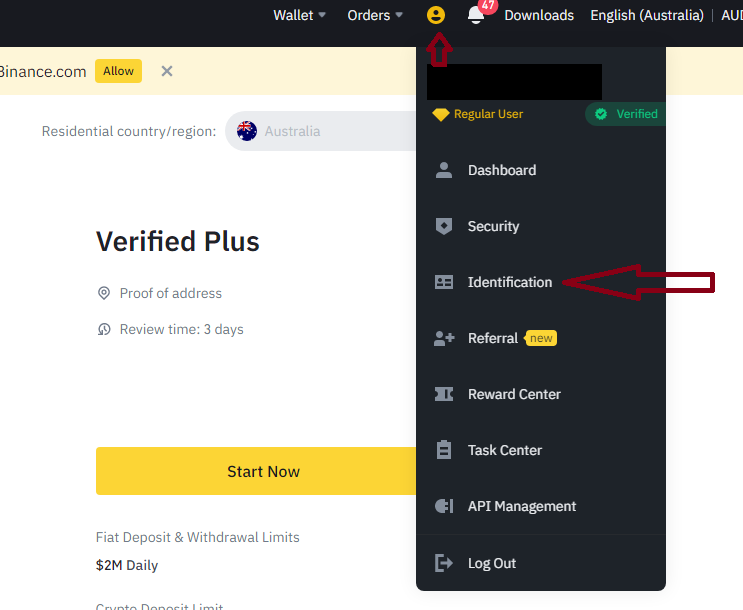
Step 2. Select document information
The exchange will prompt the individual to choose an official Government-backed form of identity to upload. This can include a driver’s License, Passport, or Visa. The documents accepted will vary depending on the account’s country of residency. This step involves uploading a copy of the document to the exchange.
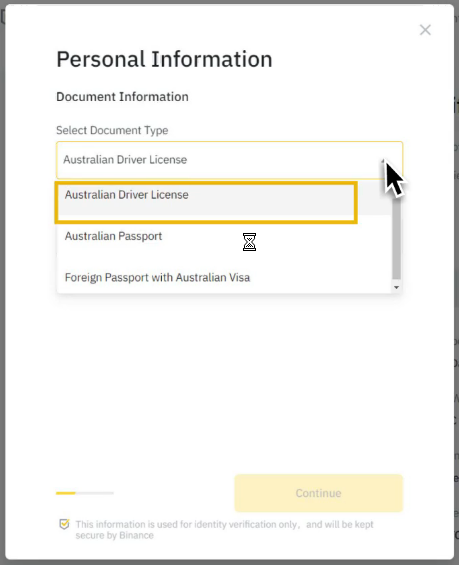
Step 3. Input selected document information
To pass the next step of the KYC process, enter the specific details of the identity document. For example, every Passport and Driver’s license comes with a unique multi-digit number that will need to be entered in. Submit the relevant information to move forward with verification.
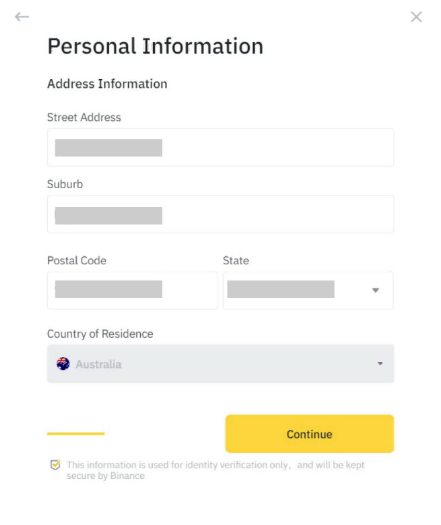
Step 4. Provide basic information
The exchange will require new accounts to provide basic personal information. This includes residential address details such as suburb, postcode, and state. The individual will need to enter this information carefully and ensure it matches the details within the uploaded documentation in the next step.
Step 5. Upload images of the chosen identity document
In this stage, upload images (or take new photos on mobile/webcam) of the front and back of the selected document. When verifying identity with a crypto exchange, the user must upload the same form of ID as chosen during step two.
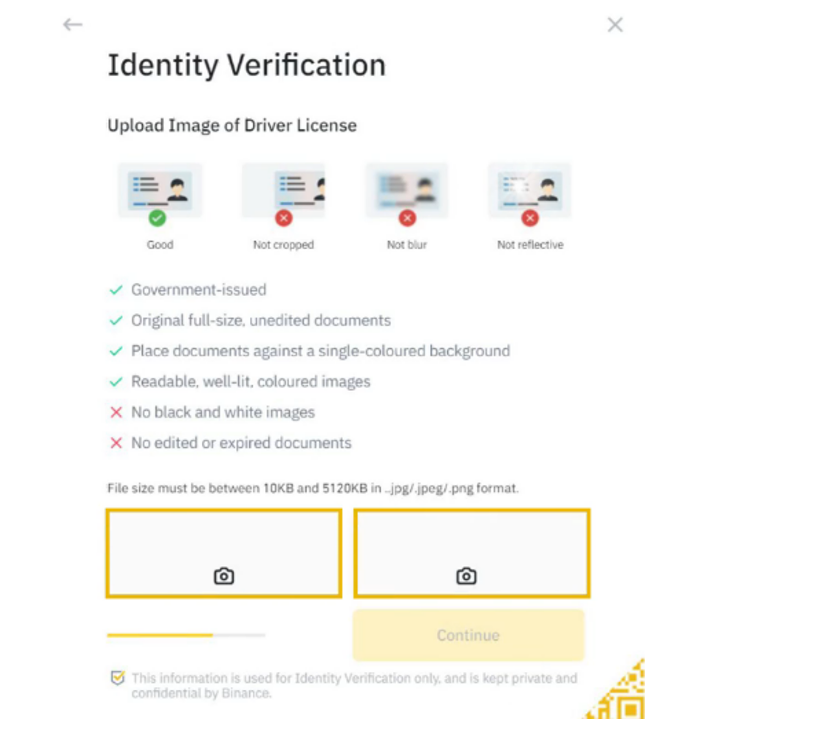
Step 6. Take a selfie
Platforms with stringent KYC measures will typically require a selfie. When verifying an account, individuals will need a webcam attached to the PC/laptop or a mobile phone to photograph the selfies required. Most modern exchanges will provide a scannable QR code to transition the process to a smartphone if necessary.
To complete this step, simply take a selfie and follow the facial recognition prompts. These might require moving your head from left to right inside the camera frame. Once the app has accepted the selfie and facial recognition data, the KYC process has been finished. The next part is to wait for for the exchange to approve the KYC submission.
